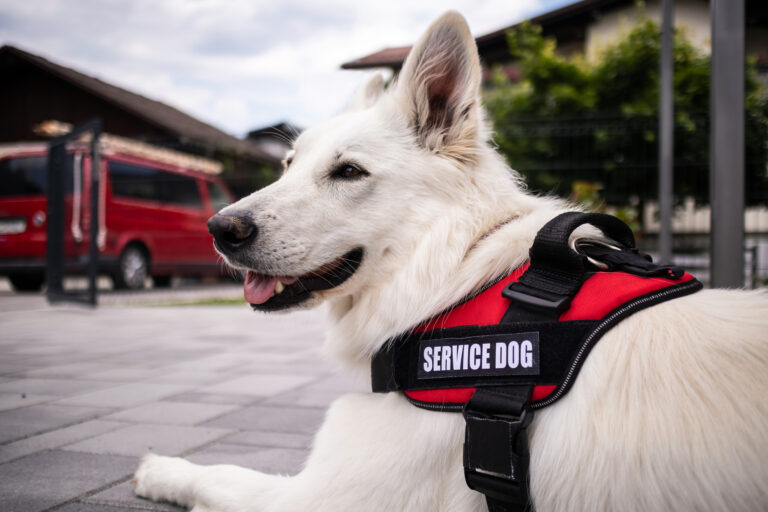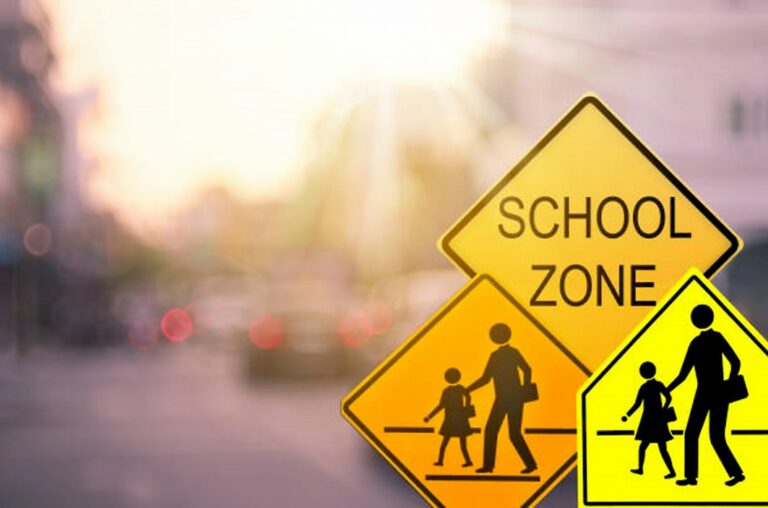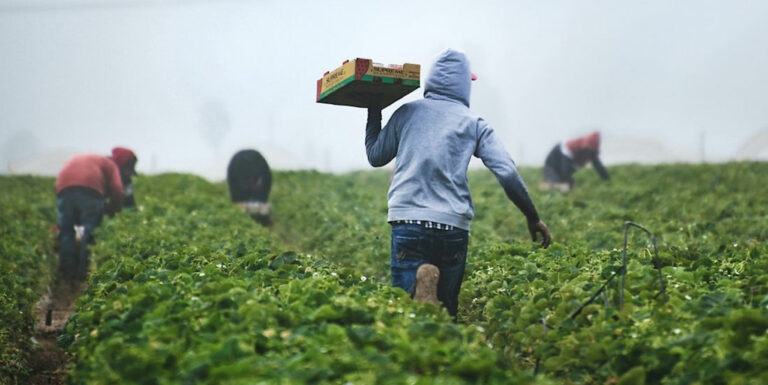
Article Archive by Year

Although they are companions to their human partners, service animals are not pets. Instead, they are trained to perform specific daily tasks, which are often still required when responders are assisting during a hurricane, mass casualty event, or another emergency. As such, emergency planning efforts should include service animals

CBRN Response Capabilities and Identified Gaps
May 24, 2023
Despite advancements in field identification and classification of substances with advanced instrumentation and tools, there is still a response gap regarding the proper decontamination of instruments and the people who use them. Take steps now to bridge this gap.

Helping First Responders & the Public Bring Home Missing Kids
May 24, 2023
An existential danger is the exploitation of children. As the threat landscape evolves, first responders have a paramount role to play in protecting these vulnerable populations and maintaining a resilient homeland security enterprise. One program leading the effort is creating a reason for hope.

Making Planning Documents More Than Words on Paper
May 17, 2023
President Harry S. Truman once said, “I believe in plans big enough to meet a situation which we can’t possibly foresee now.” However, terms like big and comprehensive do not always equate to size. Something that is laborious and unread adds no value for those tasked with managing emergencies and disasters. However,

Defining Workplace Violence
May 17, 2023
History has shown many instances where warning signs were missed before workplace violence occurred. However, understanding the five categories can help organizations and agencies prepare for and, ideally, prevent these types of incidents.

Challenges With Pediatric Mass Care Feeding
May 10, 2023
The national-level guidance on mass care feeding for state, local, tribal, and territorial organizations (SLTTs) comes from the Federal Emergency Management Agency (FEMA), and is sourced from their toolkits and the National Mass Care Strategy website, which provides a consolidated and comprehensive set of guidance material from governmental and nongovernmental mass care experts. The

Keeping Schools Safe During the Threat of Nuclear Attacks
May 10, 2023
The hands of the so-called Doomsday Clock are now set to 90 seconds to midnight, reflecting that experts believe the world is closer to a global nuclear catastrophe than it has ever been. All-hazards plans and threat assessments should reflect this potential increased threat.

Labor Trafficking – The Case Study of Marco
May 3, 2023
Countless immigrants like Marco do not self-identify as labor trafficking victims, yet this increasing crime needs to be addressed. Learn how communities can better protect these vulnerable populations.

Perfect Storm: Albuterol Shortage & Supply Chain Upset
May 3, 2023
As of 2020, albuterol was the seventh most commonly prescribed medication in the U.S., with more than an estimated 17 million patients receiving it and nearly 62 million prescriptions issued annually. Albuterol is a short-acting bronchodilator drug that helps treat or prevent respiratory issues by relaxing the smooth muscles in

Planning for Future Events Requires Updated Plans
April 26, 2023
Threats, hazards, and risks change over time as numerous variables change. This means preparedness professionals must be forward-thinking when planning for emergencies and disasters. Past events can teach valuable lessons for the future, and sometimes those lessons include adapting old plans to meet new or emerging challenges. The authors in
Service Animal Awareness in Disaster Response
June 7, 2023
Although they are companions to their human partners, service animals are not pets. Instead, they are trained to perform specific daily tasks, which are often still required when responders are assisting during a hurricane, mass casualty event, or another emergency. As such, emergency planning efforts should include service animals
CBRN Response Capabilities and Identified Gaps
May 24, 2023
Despite advancements in field identification and classification of substances with advanced instrumentation and tools, there is still a response gap regarding the proper decontamination of instruments and the people who use them. Take steps now to bridge this gap.
Helping First Responders & the Public Bring Home Missing Kids
May 24, 2023
An existential danger is the exploitation of children. As the threat landscape evolves, first responders have a paramount role to play in protecting these vulnerable populations and maintaining a resilient homeland security enterprise. One program leading the effort is creating a reason for hope.
Making Planning Documents More Than Words on Paper
May 17, 2023
President Harry S. Truman once said, “I believe in plans big enough to meet a situation which we can’t possibly foresee now.” However, terms like big and comprehensive do not always equate to size. Something that is laborious and unread adds no value for those tasked with managing emergencies and disasters. However,
Defining Workplace Violence
May 17, 2023
History has shown many instances where warning signs were missed before workplace violence occurred. However, understanding the five categories can help organizations and agencies prepare for and, ideally, prevent these types of incidents.
Challenges With Pediatric Mass Care Feeding
May 10, 2023
The national-level guidance on mass care feeding for state, local, tribal, and territorial organizations (SLTTs) comes from the Federal Emergency Management Agency (FEMA), and is sourced from their toolkits and the National Mass Care Strategy website, which provides a consolidated and comprehensive set of guidance material from governmental and nongovernmental mass care experts. The
Keeping Schools Safe During the Threat of Nuclear Attacks
May 10, 2023
The hands of the so-called Doomsday Clock are now set to 90 seconds to midnight, reflecting that experts believe the world is closer to a global nuclear catastrophe than it has ever been. All-hazards plans and threat assessments should reflect this potential increased threat.
Labor Trafficking – The Case Study of Marco
May 3, 2023
Countless immigrants like Marco do not self-identify as labor trafficking victims, yet this increasing crime needs to be addressed. Learn how communities can better protect these vulnerable populations.
Perfect Storm: Albuterol Shortage & Supply Chain Upset
May 3, 2023
As of 2020, albuterol was the seventh most commonly prescribed medication in the U.S., with more than an estimated 17 million patients receiving it and nearly 62 million prescriptions issued annually. Albuterol is a short-acting bronchodilator drug that helps treat or prevent respiratory issues by relaxing the smooth muscles in
Planning for Future Events Requires Updated Plans
April 26, 2023
Threats, hazards, and risks change over time as numerous variables change. This means preparedness professionals must be forward-thinking when planning for emergencies and disasters. Past events can teach valuable lessons for the future, and sometimes those lessons include adapting old plans to meet new or emerging challenges. The authors in
Follow Us
Get Instant Access
Subscribe today to Domestic Preparedness and get real-world insights for safer communities.
ARchives
Article Out Loud – Swatting: Combatting a Lethal and Expensive Prank
June 14, 2023
Swatting is making prank calls to bring armed responders to a specific location, usually a SWAT team. As such, responders need to be aware of this challenge and develop policies and procedures locally to address these calls.
Article Out Loud-NARCAN: THE SPRAY THAT SAVES
June 14, 2023
A pharmacist and member of a Disaster Medical Assistance Team shares his personal account of the challenges his team overcame when responding to Hurricane Katrina in this 2005 article. Listen on
Article Out Loud – After the Storm: A Flood of Compassion Healing the Wounded, in the City That Care Forgot
June 7, 2023
A pharmacist and member of a Disaster Medical Assistance Team share his personal account of the challenges his team overcame when responding to Hurricane Katrina in this 2005 article.
Article Out Loud – Service Animal Awareness in Disaster Response
June 7, 2023
Service animals are trained to perform specific daily tasks, which are often still required when responders are assisting during a hurricane, mass casualty event, or another emergency. As such, emergency planning efforts should include service animals to ensure responders can identify the animals’ critical roles, acknowledge their specialized training, and
Article Out Loud – Food and Agriculture Sector Perspectives
June 7, 2023
The Food and Agriculture Sector is one of 16 sectors identified as critical infrastructure under the Cybersecurity & Infrastructure Security Agency. Domestic Preparedness invited subject matter experts to answer important questions about this sector and how the sector and its interdependencies can affect any community.
Article Out Loud – Helping First Responders & The Public Bring Home Missing Kids
May 24, 2023
An existential danger is the exploitation of children. As the threat landscape evolves, first responders have a paramount role to play in protecting these vulnerable populations and maintaining a resilient homeland security enterprise.
Article Out Loud – CBRN Response Capabilities and Identified Gaps
May 24, 2023
Despite advancements in field identification and classification of substances with advanced instrumentation and tools, there is still a response gap regarding the proper decontamination of instruments and the people who use them.
Article Out Loud – A Healthcare Coalition’s Support for Evacuating a Facility
May 23, 2023
Learn how the National Capital Region took a giant step forward with the formation of a coalition partnership to cope with evacuations during catastrophic emergencies in this 2012 article.
Article Out Loud – Defining Workplace Violence
May 17, 2023
History has shown many instances where warning signs were missed before workplace violence occurred. However, understanding the five categories can help organizations and agencies prepare for and, ideally, prevent these types of incidents.
Article Out Loud – Making Planning Documents More Than Words on Paper
May 17, 2023
Comprehensive planning documents are vitally important, but they can easily become simple “check-the-box” requirements that result in sizeable unread documents that sit on the shelves. Organizations must take steps to avoid this pitfall.
Follow Us
Get Instant Access
Subscribe today to Domestic Preparedness and get real-world insights for safer communities.


